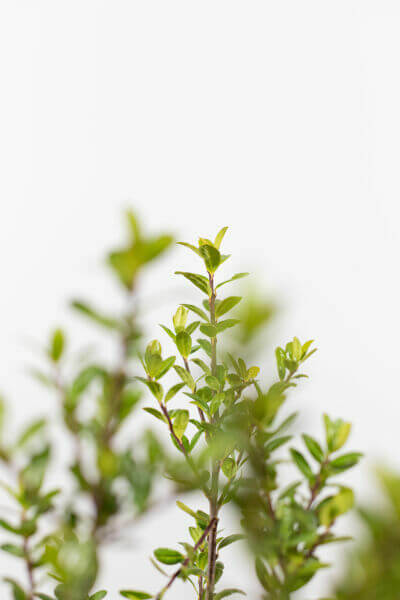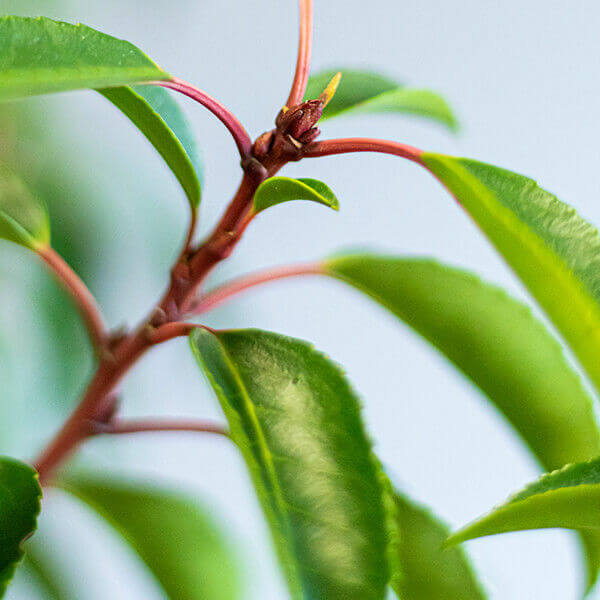Best Hedging Plants For Frosty Areas
Boost your garden's attraction with rich hedge ranges such as Yew (Taxus), Thuja, Laurel, Photinia, and Bamboo, celebrated for their structural stability and environmental advantages.
Yew and Thuja supply evergreen coverage and winter season resilience, while Laurel provides rapid development and broad, aromatic leaves.
Photinia adds seasonal charm with its dynamic red foliage, and Bamboo provides a low-maintenance, peaceful atmosphere.
These hedges improve air quality, decrease sound, and create tranquil, private areas.
Correct planting, spacing, and maintenance guarantee energetic growth and environmental consistency.
Check out how these lush ranges can raise your garden's appeal and well-being.
Key Takeaways
Change Your Garden With Lush Hedge Ranges
- Select Yew for its thick, evergreen development and unrivaled longevity.
- Select Laurel for its quick development and broad leaves, ensuring quick privacy.
- Select Photinia for its dynamic seasonal foliage, which turns a striking dark red.
- Make use of Bamboo for a low-maintenance, winter-hardy hedge with visual appeal.
- Area plants 2-3 per meter and prune frequently for optimum development and health.
Popular Hedge Plants
When changing a garden with lavish hedge varieties, it's important to consider popular hedge plants such as Yew, Thuja, Laurel, and Photinia due to their distinct qualities and advantages.
Yew (Taxus) is extremely respected for its durability and thick, green development, making it a prime option for sustaining landscapes.
Thuja is kept in mind for its evergreen foliage and robust winter season strength.
Photinia includes seasonal vibrancy with red leaves that darken gradually, producing vibrant visual appeal.
Laurel offers rapid growth and fragrant, broad leaves, ideal for fast personal privacy.
Furthermore, Bamboo is an exceptional option for ambiance, offering a low-maintenance, winter-hardy option that boosts the garden's aesthetic with its elegant, swaying walking sticks.
These selections cater to a variety of horticultural requirements and choices.
Benefits of Garden Hedges
Garden hedges offer a multitude of advantages, making them an important addition to any landscape. These natural barriers are economical to execute and provide substantial wind defense, improving air circulation and adding to noise decrease. The thick foliage of hedges like Thuja and Beech makes sure privacy by blocking presence, producing a serene and remote environment.
Hedges likewise play an essential function in microclimate regulation, supplying a stable environment that cultivates plant growth and minimizes temperature level fluctuations. Their complex leaf structures filter pollutants, enhancing air quality and contributing to a healthier garden ecosystem.
Furthermore, hedges excel in sound reduction, taking in and deflecting acoustic waves to lower ambient sound levels. This dual functionality of offering both visual and acoustic personal privacy enhances the general harmony and aesthetic appeal of any garden.
Planting and Upkeep Tips
For an effective hedge, meticulous preparation of the planting location is crucial. Guarantee the soil has correct pH and drainage to support strong root development.
Area the plants appropriately for the selected types. Water the hedge frequently during its preliminary development phase, adjusting as required with seasonal modifications.
Implement a methodical bug control and illness prevention technique, utilizing chemical or natural treatments when necessary. Routinely examine for aphids, termites, and fungal infections.
Apply mulch to maintain wetness and suppress weeds. Seasonal pruning promotes dense growth and air flow, vital for plant health.
Following these standards will assist you cultivate a lively, well-maintained hedge that enhances the beauty of your garden.
Spacing and Trimming Guidelines
Spacing and Cutting Standards
Correct spacing and cutting are vital for cultivating healthy, aesthetically appealing hedges. Appropriate spacing makes sure each plant gets enough nutrients, light, and air flow.
Follow these standards for optimum hedge upkeep:
- Spacing: Position hedge plants 2-3 plants per meter to motivate robust development.
- Pruning Methods: Regular pruning is important for preserving desired hedge height and shape. Trim brand-new development in summertime and cut down older wood during winter.
- Seasonal Care: Adjust cutting approaches and schedules according to seasonal requirements to make sure plant health.
- Hedge Height: Routinely monitor and trim to keep the wanted hedge height and accomplish uniform visual appeals.
Following these actions will ensure your hedge thrives, boosting both the appeal and functionality of your garden.
Choosing the Right Hedge
Picking the Right Hedge
Picking the suitable hedge involves examining elements such as mature height, foliage density, and ecological resilience. Successful hedge plant choice needs understanding each types' development qualities and site-specific flexibility.
For example, Yew (Taxus) offers outstanding longevity and thick growth, while Thuja is significant for its winter season resilience. Furthermore, thinking about upkeep requirements is important; fast-growing types like Laurel or Privet need routine cutting, whereas low-maintenance options like Bamboo or Ivy might be more suitable for those looking for very little maintenance.
Ecological aspects such as soil type, light availability, and moisture conditions should also guide the selection process. This careful approach ensures the selected hedges will prosper, supplying both visual and practical advantages to the garden landscape.
Shipment and Planting Guidance
To ensure your hedge plants flourish, they ought to be delivered by specialized couriers and planted promptly upon arrival.
Follow these essential actions for effective planting:
- Soil Preparation: Enhance the soil with organic matter to improve drainage and nutrient content.
- Planting Depth: Create a trench two times the width and equal to the depth of the root ball.
- Watering Methods: Water thoroughly after planting, keeping the soil regularly damp but not filled.
- Mulching: Apply a layer of mulch to retain wetness and suppress weeds.
Customer Assistance and Service
Provided the essential function of timely assistance in horticultural pursuits, our customer assistance group is available 6 days a week through telephone, e-mail, and social media to use expert suggestions and quickly deal with any issues. Their commitment to fast reaction times ensures client satisfaction by fixing queries connected to plant health, optimal planting techniques, and upkeep schedules.

-------------------
Six days a week
Within 24 hours
This detailed support group, strengthened by an excellent 9.3/ 10 consumer score, highlights our dedication to boosting the gardening experience for each customer.
Often Asked Questions
The Length Of Time Does It Take for Hedge Plants to Develop?
Hedge plants generally need one to three years to end up being completely developed, with the precise period differing by types and growing conditions.
Reliable care throughout this critical duration is essential for robust development. Constant watering, watchful weed control, and proper fertilizer application are pivotal in promoting strong root advancement.
For instance, fast-growing species like Laurel might develop more quickly, while slower-growing ranges such as Yew might take longer. Thorough maintenance speeds up the facility process, resulting in healthy and thick hedges.
What Are the very best Hedge Plants for Personal Privacy?
The concern of the very best hedge plants for privacy involves examining evergreen and deciduous options.
Evergreen hedges like Thuja, Laurel, and Cypress provide year-round coverage, making sure constant privacy.
In contrast, deciduous hedges such as Beech provide seasonal personal privacy, shedding leaves in colder months.
Key upkeep suggestions for personal privacy hedges consist of routine cutting, fertilizing in spring, and proper spacing-- generally 2 to 3 plants per meter.
Furthermore, constant watering and persistent weed elimination are vital for promoting healthy, thick development.
Can Hedge Plants Bring In Wildlife to My Garden?
Yes, hedge plants can bring check here in wildlife to your garden by supplying necessary advantages like shelter, food, and nesting websites, consequently improving local biodiversity. Yew, holly, and laurel are outstanding for drawing in birds, while ivy supports a variety of insects.
Nevertheless, it is necessary to keep in mind that there are some disadvantages, such as increased maintenance to manage bugs and routine upkeep. Thoroughly selecting and maintaining hedge ranges can assist balance these disadvantages and benefits, eventually promoting a sustainable and vibrant environment in your garden.
Exist Any Blooming Hedge Plants Available?
Yes, there are flowering hedge plants offered that can improve the beauty of your garden.
For instance, Elaeagnus, also called Olive Willow, produces fragrant white flowers in the fall, including a touch of beauty.
Photinia, another popular choice, showcases dynamic red leaves that mature into an abundant green, creating a vibrant visual effect throughout the seasons.
To make sure these plants flourish, it's vital to practice appropriate pruning techniques and seasonal upkeep, such as trimming new development in the summer and cutting down in the winter.
These measures will help maintain the health and visual appeal of your flowering hedges.
How Do I Prevent Bugs in My Hedge Plants?
To prevent insects in hedge plants, use natural pest control techniques and keep proper hedge care. Present beneficial bugs like ladybugs, which victimize harmful insects, to develop a balanced community.
Regularly check your hedges for signs of infestation and immediately get rid of any affected parts to prevent the spread. Guarantee the health of your hedges by using well balanced fertilizers and providing adequate water.
Utilize mulching to keep soil wetness and proper spacing to decrease plant stress and promote robust development. These practices collectively assist in minimizing pest issues and maintaining a healthy hedge.
Conclusion
In essence, selecting the best hedge varieties such as Yew, Thuja, and Laurel can transform any garden into a peaceful haven. These plants provide year-round greenery, enhance visual appeal, and deal useful advantages like sound reduction and wind protection.
Proper planting techniques, precise spacing, constant watering, and seasonal cutting are crucial for ideal growth.
Reputable delivery services and expert consumer assistance guarantee a seamless experience from purchase to planting, making it easier than ever to raise your outside area.
Garden hedges use a plethora of advantages, making them a valuable addition to any landscape. These natural barriers are cost-effective to carry out and offer significant wind defense, improving air flow and contributing to noise reduction. The thick foliage of hedges like Thuja and Beech guarantees personal privacy by blocking visibility, developing a peaceful and secluded environment.

Pruning Methods: Routine pruning is vital for preserving preferred hedge height and shape. Trim new growth in summer season and cut back older wood throughout winter season.
Comments on “Best Hedging Plants For Ground Cover”